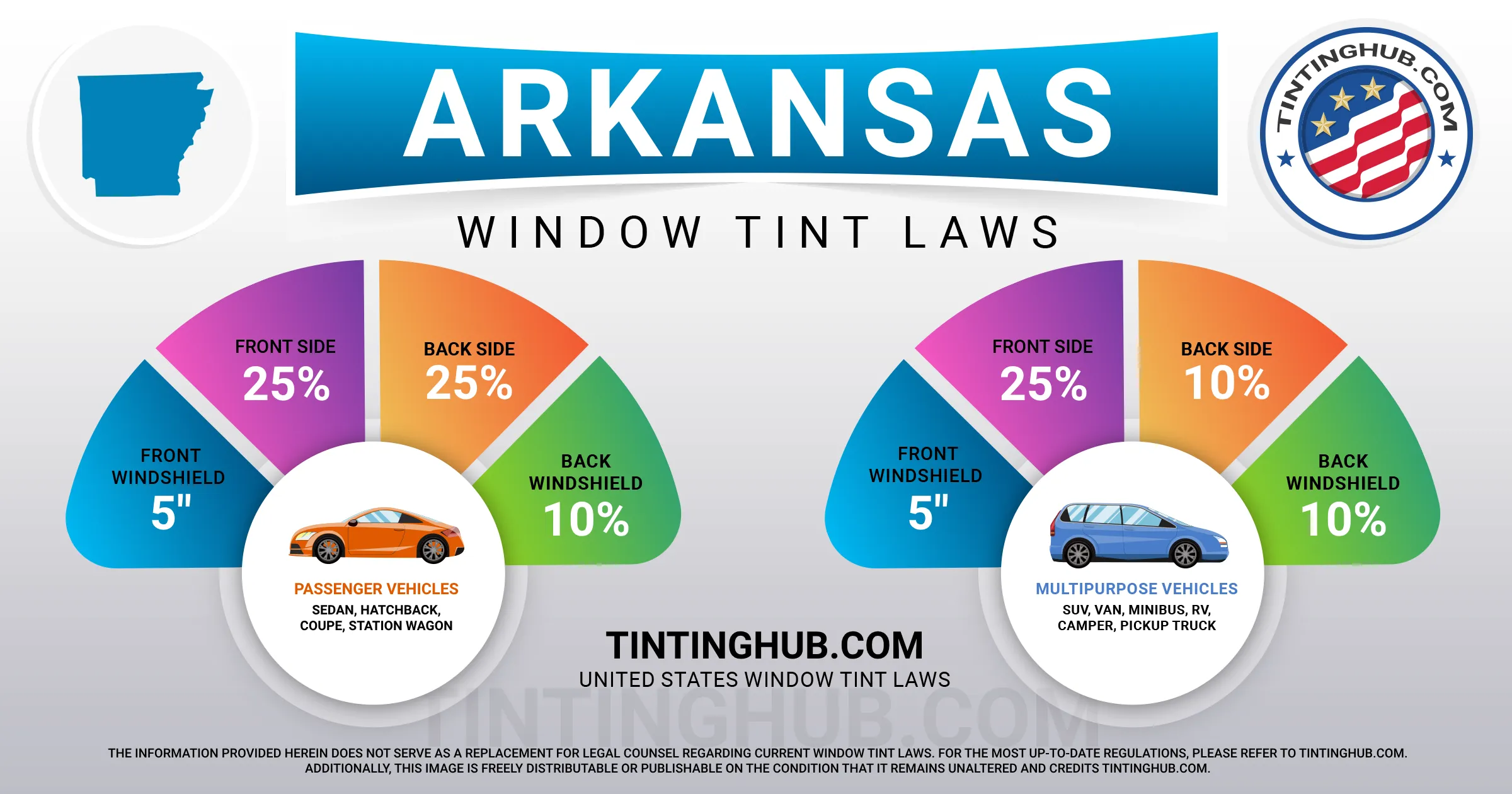Arkansas Window Tint Laws (Last Update 2024)

Car window tinting regulations in the state of Arkansas have been in effect since 1993. These guidelines govern the darkness and reflectivity of window tint, ensuring safety and transparency on the roads. In this article, we will provide a comprehensive overview of Arkansas’ car window tinting laws, covering everything from permissible darkness levels to tint reflection. Let’s delve into the specifics and navigate the world of window tinting in the Natural State.

Understanding Window Tint Darkness (VLT) in Arkansas
The percentage of visible light allowed through your car windows is referred to as VLT, which stands for Visible Light Transmission. Arkansas has set specific VLT limits, and these limits vary for different vehicle types.
For Sedans:
- Windshield: Non-reflective tint is permitted on the top 5 inches.
- Front Side Windows: Must allow more than 25% of light.
- Back Side Windows: Must allow more than 25% of light.
- Rear Window: Must allow more than 10% of light.
For SUVs and Vans:
- Windshield: Non-reflective tint is allowed on the top 5 inches.
- Front Side Windows: Must allow more than 25% of light.
- Back Side Windows: Must allow more than 10% of light.
- Rear Window: Must allow more than 10% of light.
Understanding Window Tint Reflection Regulations
Window tinting can help reduce glare and heat by reflecting incoming light. In Arkansas, there are regulations governing the level of tint reflection permitted.
For Sedans:
- Front Side Windows: Metallic or mirrored appearance is not allowed.
- Back Side Windows: Metallic or mirrored appearance is not allowed.
For SUVs and Vans:
- Front Side Windows: Metallic or mirrored appearance is not allowed.
- Back Side Windows: Metallic or mirrored appearance is not allowed.
Additional Window Tinting Laws and Regulations in Arkansas
Arkansas has further laws and regulations concerning window tinting that are important to be aware of:
- Side Mirrors: There are no specific restrictions on side mirrors.
- Restricted Colors: Arkansas law does not explicitly prohibit any specific tint colors.
- Certificates: Film manufacturers are not obligated to certify the tint film they sell in Arkansas.
- Stickers: To identify legal tinting, a sticker must be placed between the film and the glass on the driver’s side window.
- Medical Exceptions: Arkansas does provide medical exemptions for special tints, so individuals with medical conditions may be permitted darker tints.
- Penalties: Violations of tinting laws are considered Class B misdemeanors.
It’s important to note that the interpretation of Arkansas’ tinting laws may vary by county or place of residence. Therefore, it’s advisable to double-check this information with your local Department of Motor Vehicles (DMV) or law enforcement authorities.
Our information on Arkansas window tint laws was last updated in 2024. If you come across any outdated or incorrect information, please don’t hesitate to contact us so we can make the necessary updates. Your safety and compliance with the law are of utmost importance. Drive responsibly and within the guidelines of Arkansas’ window tinting laws.